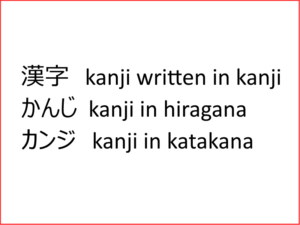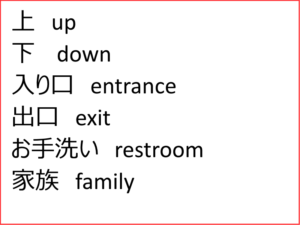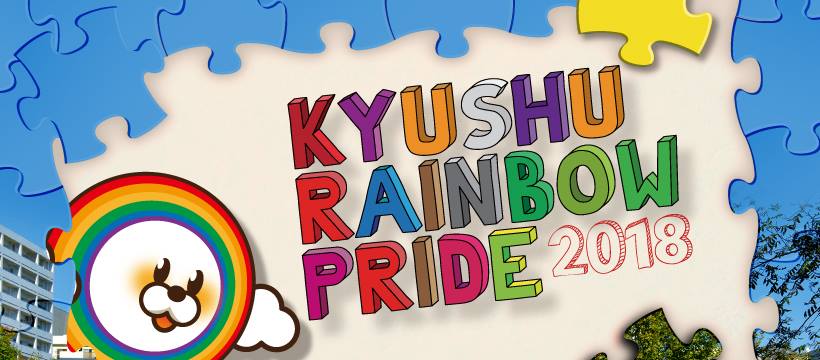Do a search for the most difficult language to learn and, especially for English speakers, Japanese is at the top. I’m sure you won’t get any argument from people who’ve tried to learn it. So why is it so difficult ? In a word, writing.
Japanese uses a set of characters derived from Chinese that the Japanese call kanji (漢字 in Japanese, where 漢 kan, means China though only when it’s used with other kanji, and 字 ji means letter, or character — it’s kind of difficult already, isn’t it ?) Kanji are a kind of ideogram, where a character symbolizes an idea, not necessarily a word.

The kanji 上 for example represents the ideas associated with”up.” Up, above, over, elder, top, and summit are some of the words that show up when you look up this kanji in a dictionary. In Chinese, there are only ideograms so they have to be combined in order to make words, and there are thousands of them.The Japanese simplified this by giving each kanji at least two ways of being pronounced, or read, with one being derived from the ancient Chinese pronunciation and the other from a Japanese pronunciation. In a dictionary, the first reading of 上 is ue [ooh,eh] and by itself it can mean on top of, on the surface of, and the top of. The other reading of 上 is jyou [which sounds like Joe.] This is oversimplified, but generally kanji alone, or in combination with other kanji such as 上方 (upper part) are nouns and numbers.
While kanji basically have two readings, some have only one and some have several. The only one case is usually explained as things that didn’t exist, or weren’t common in Japan when kanji were adopted from China, like elephant and meat, or kanji that were created in Japan and not imported, like the kanji for sardine and unhulled rice. And some kanji have a bunch ! The best explanation of this I’ve read is that some ideas were expressed differently in different areas like a beverage that might be called a Coke, a soda or a pop. All of these eventually got stuffed into a kanji that represents “fizzy, sugary drink that’s not healthy but we all like sometimes.”
To get to adjectives and verbs, Japanese adds another whole set of characters after the kanji. These are called hiragana. There are basically 46 of them and they’re phonetic, or only pronounced one way. 上る means ascend, and 上っている means ascending, for example, where 上 is the kanji, and る and っている are hiragana. So just getting started in Japanese means learning some kanji and all 46 hiragana. It gets worse because some of the hiragana change euphonically (basically to sound better or be easier to pronounce.)The hiragana that have an “h” sound can change to a “p” or “b” and still be the same word.

And then there are loan words. Similar to how English uses italics to show that a word wasn’t originally English or isn’t commonly used, like derriere, Japanese has a whole other set of 46 phonetic characters called katakana for foreign loan words. The katakana characters have the same pronunciation as the hiragana, they just look different. あ and ア are both “ah” but the first is hiragana and the second is katakana. Generally, hiragana are curvy and katakana more angular.
The words used for radio and bread and banana are written in katakana because they came from foreign countries. Foreign names like Marilyn Monroe are always written in katakana. Sometimes a perfectly good Japanese word exists but it’s considered more stylish to use a foreign word. Shashinki is the Japanese word for camera but these days people are more likely to say camera. That would be “camera” with it’s katakana pronunciation, which is a bit different. If you have a friend who is, or who speaks, Japanese, ask them the katakana pronunciation of McDonald’s; it sounds something like mah koo doe na roo doez.
Finally, English is ubiquitous and all Japanese learn the English alphabet and use it regularly. Menu, camera, cake, and coffee are words you will often see on signs and store windows.
Many people I’ve known in Japan started by learning hiragana and katakana because they will get you through a lot of menus and signs. A handful of kanji from any basic textbook is also very handy for getting around. Things like entrance and exit and restroom can really help. One trick many people rely on is learning katakana pronunciation. There are tons of English words that Japanese people will understand if you can just pronounce them like they’re spelled in katakana. McDonald’s is an example, but words like water and chocolate are also pronounced quite differently.
I can promise that any Japanese you manage to learn will be appreciated by people you meet here, and likely help you get around, too.





Comments